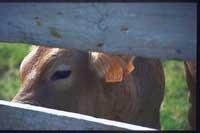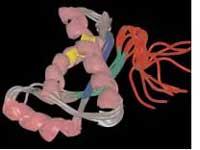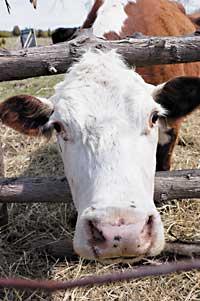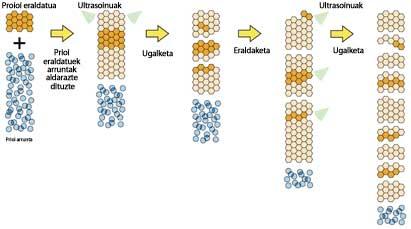Meadows cross borders between species
2001/03/09 Galarraga Aiestaran, Ana - Elhuyar Zientzia

Proteins responsible for BSE are an abnormal variant of normal prions. Somehow they manage to change the appearance of normal prions and, over time, all prions of the animal's brain have a pathogenic appearance. The disease is a consequence of the proliferation of pathogenic variants of prions or the decrease of healthy proteins.
However, the greatest concern of researchers is how prions have jumped from one species to another. Some consider that pathogenic prions are so flexible that they can take different forms depending on the species, one to produce disease in their species of origin and one for a second. Another theory says it needs another agent, for example, another protein that is not yet known.
The search for answers to these questions in mammals is very difficult, since the production of pathogenic prions of mammals in the laboratory has not been achieved and, in addition, samples of infected tissues contain other substances besides prions. Therefore, Peter Chien and Jonathan Weissman, of the University of California, have used two species of yeasts (Candida albicans and Saccharomyces cerevisae) to investigate the leap between species. In fact, working with yeasts is technically much simpler, cheaper and faster.
Yeast cells produce a prion called sup35 that, like most mammalian prions, cannot be affected by the normal sup35 of another yeast species. The researchers wanted to know how much the prions of both species should look so that the prion of one species could affect another. To do this, gluing the pieces of prion of both yeasts, they created the chimeric prion, which is not in nature.
According to them, only one end of the pathogenic prions allowed knowing the normal prions and altering their appearance. Therefore, the chimeric prion was expected to affect only one of the two species. However, the chimera made the supprions of both yeast species appear as buds.
This study shows that prions can adopt different pathogenic forms and can influence other proteins. In addition, it does not need help from other proteins.
Now they must test in mammals to see that what is observed in yeast also occurs in mammals. In fact, although this study is very important, mammalian proteins are very different.

Gai honi buruzko eduki gehiago
Elhuyarrek garatutako teknologia






